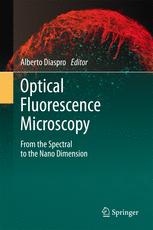

Most ebook files are in PDF format, so you can easily read them using various software such as Foxit Reader or directly on the Google Chrome browser.
Some ebook files are released by publishers in other formats such as .awz, .mobi, .epub, .fb2, etc. You may need to install specific software to read these formats on mobile/PC, such as Calibre.
Please read the tutorial at this link: https://ebookbell.com/faq
We offer FREE conversion to the popular formats you request; however, this may take some time. Therefore, right after payment, please email us, and we will try to provide the service as quickly as possible.
For some exceptional file formats or broken links (if any), please refrain from opening any disputes. Instead, email us first, and we will try to assist within a maximum of 6 hours.
EbookBell Team

4.3
28 reviewsIn the last decade, fluorescence microscopy has evolved from a classical “retrospective” microscopy approach into an advanced imaging technique that allows the observation of cellular activities in living cells with increased resolution and dimensions. A bright new future has arrived as the nano era has placed a whole new array of tools in the hands of biophysicists who are keen to go deeper into the intricacies of how biological systems work. Following an introduction to the complex world of optical microscopy, this book covers topics such as the concept of white confocal, nonlinear optical microscopy, fluctuation spectroscopies, site-specific labeling of proteins in living cells, imaging molecular physiology using nanosensors, measuring molecular dynamics, muscle braking and stem cell differentiation.